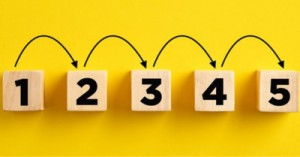According to EYLF, scaffolding comprises of the educators’ decisions and actions that build on children’s existing knowledge and skills to enhance their learning. In early childhood education, this is one of the most useful learning approaches since it offers guidance when children are learning a skill or concept while also giving them enough room to think and explore on their own. The following article provides information on Scaffolding And Theory, the Benefits Of Scaffolding, the Educator's Role In Scaffolding, Strategies and more.
Scaffolding and Theory
The term scaffolding was first associated with the educationist and psychologist called Vygotsky. He outlined the notion of Zone of Proximal Development (ZPD) for describing the difference between what a child can achieve/learn independently and what a child can achieve/learn with the guidance and assistance of adults or collaboration with more experienced, capable children.
It is in this Zone of Proximal Development that scaffolding takes place. This happens when scaffolds are provided by other children or adults to support children’s learning. Such scaffolds can be questions, prompts and demonstrations that help children move through learning with assistance to learn newly shared or independent understandings or skills.
What Are The Benefits Of Scaffolding
It eschews a teacher-centred approach for a more learner-centred one. Traditionally educators were seen as repositories of knowledge and skills whose work was to pass down the knowledge to children and instruct them in those skills. In scaffolding, however, educators act more as facilitators, guiding the children in their learning and making it possible for them to make their own learning happen.
By allowing children more room to think, plan and solve problems on their own, scaffolding fosters these cognitive skills in children. Similarly, such activities encourage children to think outside the box, explore what can and cannot work and build their creative intelligence.
Scaffolding offers more opportunities for children to learn by playing and doing. This makes learning experiences much more enjoyable than purely imitative or instruction-heavy activities. And whatever is more engaging for children has a higher chance of succeeding as a learning experience.
Since scaffolding presents many opportunities for group activities and projects, they nurture social and emotional learning too in children. As they work with each other, children practice social skills like sharing, collaboration, turn-taking and negotiation. They learn to regulate their emotions and use communication rather than negative behaviour to express their needs and opinions.
Finally, scaffolding fosters autonomy and self-confidence in children as they learn to solve problems and complete tasks with lessening support from educators.
Educator’s Role In Scaffolding
In scaffolding, the primary role of the educator is that of a facilitator. This involves:
- educators facilitating learning spaces where children can engage themselves, think and plan, and take appropriate risks but at the same time be able to reach out to adults and peers for support. Educators should also make accessible a variety of learning materials, equipment and tools that support children in planning and problem-solving – whether working alone or in groups. Providing resources like books, posters, and videos so that children learn to look for support independently, is another aspect of applying scaffolding in the classroom.
- educators facilitate learning experiences ranging from high-support interventions like modelling and demonstrating to low-support interventions like giving cues and feedback.
- educators facilitate connections between children in mixed-ability groups as part of peer scaffolding or fostering communication and social skills as children work on projects or group activities. Other types of interaction facilitated by educators during scaffolding are those with families and the wider community – for example, once children have made a mural on whales, they can be taken to a natural history museum to build links between existing and new knowledge.
Because of the range of strategies included in scaffolding, educators can also be required to adopt other roles like:
- a model in which they demonstrate to children certain skills before the young learners can do them on their own.
- an observer which involves noticing children’s interests, behaviours and play so as to design learner-centred teaching experiences and recognise ‘teachable moments.
- a guide that involves listening carefully and responding deliberately to children’s conversations, enquiries, questions and theories about their experiences and the world.
Strategies For Scaffolding
- Building interest and engaging the learner. This can be done by supporting child-initiated play and investigations or using your observations of children’s activities to identify interests and design suitable activity prompts. For example, if an autumn festival is around the corner or you notice that children have a lot of fun making piles of dried leaves jump, you can use such interests to design learning activities.
- Breaking down tasks into bite-size tasks and prompting for the next step. For example, if children are making apple salad, break the activity into smaller steps, starting with washing the fruits, getting the bowl ready, adding herbs, breaking the walnuts and seasoning the fruits.
- Modelling and demonstrating techniques and skills, giving clear instructions and asking open-ended questions so as to make learning explicit and relevant. Continuing with the above example, educators can show children how to wash and scrub the apples and for older children, safely chop the fruits.
- Using teachable moments – for example, the educator can look for an appropriate moment to discuss different parts of a plant or what is a fruit; eventually, this can be extended to make connections between existing and new learning like differences between a vegetable and fruit or a flower and fruit.
- Providing supportive feedback on attempts and approximations as well as discussing with children the outcomes of their choices – thus for instance, as children work at making the salad, the teacher could offer suggestions or feedback on skills like pouring, measuring and stirring as well as on how the salad finally looks, smells and tastes.
- Facilitating inquiry-based thinking – for this, the educator can use a child’s question as an opportunity to engage the entire group of children in the process of inquiry, in the process using such techniques as drawing attention to detail, open-ended and inferential questioning, contextualization and generalization.
For example:
The following discussion of a group of children visiting a pond with their teacher gives examples of such techniques. While most children lie on their stomachs on the wooden dock and look into the water, a few use sticks to poke down into the water. One child notices that the water did not go up as high on the stick as it had on a previous visit and then asks the teacher where the water went:
Teacher: Where’s the water going, guys? (Child A) wants to know what’s happening to it. (Inferential)
Child A: It’s going down a waterfall.
Teacher: Do you see a waterfall around here? (Inferential; draw attention to details)
Other children: Nooooo!
Teacher: Do you ever have a puddle in your yard? What happens to it? (Contextualization)
Child B: Water vapor! It goes up and it comes back down again.
Teacher: That’s the water cycle you’re talking about. (Generalization) What happens to the water in the puddle? Does it all go up? (Inferential)
Child B: It goes down in the ground…some evaporates, and some goes down in the ground.
Teacher: Do you think that’s what’s happening here? (Inferential)
Other children: Yes!
In the above exchange, the teacher uses: - inferential questions to support children’s use of information available in the environment as well as their own knowledge to make an inference about what was happening to the water.
- the technique of drawing attention to details so that children could notice clues in the surrounding in environment and think for themselves.
- contextualization because asking children whether they ever had a puddle in their yard served to reinforce the similarity between what happens to a puddle in their yard and what was likely happening to the pond, which is essentially a bigger puddle.
- generalization to name the superordinate concept that is related to a specific exemplar identified by a child, in this case, the water cycle.
- the inferential question again about whether all of the water evaporated, so that a child can infer that some evaporated and some went down into the ground, thereby extending their thinking beyond what they knew – water cycle – into new directions, the absorption of water into the ground.
- Documentation – though not commonly considered a scaffolding strategy, this is important as it makes visible to children their own thinking and learning. Educators can gather documentation of children’s ideas, questions, and experiences by using photographs, written descriptions, and even videos of their exact conversations and experiences. This not only provides children opportunities to review and reflect on what worked or how they might think differently in the future but also helps them feel good about their efforts by visually representing their accomplishments and abilities.
Each child can realise their full potential with the aid of scaffolding techniques. Quality methods in teaching and learning can benefit from understanding scaffolding. Scaffolding provides a foundation for thinking as well as aiding in directing children's learning by instructing. Children develop, but teachers also advance in their capabilities too.
Further Reading
Child Theorists Posters - The following posters of 11 popular child theorists provide a brief description of their theory and how their theories are implemented into practice within the early childhood environment. These posters are great to use as a display within the service or as a reminder for Educators on the different types of child developmental theories which they can refer to and use within their documentation.
Child Theorists and Their Theories in Practice - The following is an overview of popular child theorists, a brief description of their theories and how to implement their theories into practice within the early childhood environment.
Guidelines For Documenting In Early Childhood Services - The following article provides strategies for documenting in an early childhood setting.
Using Open-Ended Questions with Children - The following article provides information on the Benefits Of Using Open-Ended Questions, How To Ask Open-Ended Questions, Questions To Challenge Thinking and more.
References:
Belonging, Being and Becoming - EYLF, ACECQA
Educator's Guide To The EYLF, ACECQA
Scaffolding As A Tool, International Journal Of Early Childhood Education







 As an Educator in Australia, your pay rate falls under the Children’s Services Award 2010. This award states the minimum amount that an employer can
As an Educator in Australia, your pay rate falls under the Children’s Services Award 2010. This award states the minimum amount that an employer can When working as a qualified Early Childhood Teacher (with a university degree) within a service, your rate of pay will come from the Educational Services
When working as a qualified Early Childhood Teacher (with a university degree) within a service, your rate of pay will come from the Educational Services When working as a Diploma Qualified Educator your pay rate is from the Children's Services Award 2010. This Award states your minimum rate of pay
When working as a Diploma Qualified Educator your pay rate is from the Children's Services Award 2010. This Award states your minimum rate of pay When working as a Cert 3 Qualified Educator, your pay rate is from the Children's Services Award 2010. This Award states your minimum rate of
When working as a Cert 3 Qualified Educator, your pay rate is from the Children's Services Award 2010. This Award states your minimum rate of Educational Leaders play a crucial role in their early childhood service by ensuring that the educational program aligns with best practices and supports the holistic
Educational Leaders play a crucial role in their early childhood service by ensuring that the educational program aligns with best practices and supports the holistic In early childhood education and care, ratios are more than a technicality—they are a frontline safeguard. Every child deserves responsive supervision, emotional connection, and developmental
In early childhood education and care, ratios are more than a technicality—they are a frontline safeguard. Every child deserves responsive supervision, emotional connection, and developmental With the new national child safety reforms kicking in on 1 September 2025, early childhood services like yours have a real opportunity to lead the
With the new national child safety reforms kicking in on 1 September 2025, early childhood services like yours have a real opportunity to lead the Here’s a comprehensive Mobile Phone and Smart Watch Policy tailored for early childhood education and care (ECEC) services in Australia, aligned with the latest 2025
Here’s a comprehensive Mobile Phone and Smart Watch Policy tailored for early childhood education and care (ECEC) services in Australia, aligned with the latest 2025 The Sea of Fish Challenge is a national initiative that invites children, educators, families, and communities to create and display fish artworks as a symbol
The Sea of Fish Challenge is a national initiative that invites children, educators, families, and communities to create and display fish artworks as a symbol Across the early childhood education and care sector, educators are sounding the alarm: current staffing ratios are insufficient to deliver safe, meaningful, and developmentally appropriate
Across the early childhood education and care sector, educators are sounding the alarm: current staffing ratios are insufficient to deliver safe, meaningful, and developmentally appropriate


